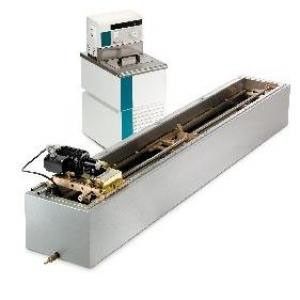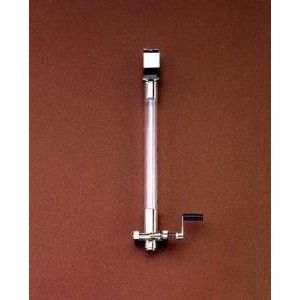Asphalt testing is an important part of ensuring the quality of the material. By understanding the purpose and process of each test, it is possible to ensure that the asphalt used in construction is of the highest quality.
Asphalt, also known as bitumen, is a sticky, black, and highly viscous liquid or semi-solid form of petroleum. It may be found in natural deposits or may be a refined product; it is a substance classed as a pitch. Before asphalt is used in construction, it must undergo a series of tests in order to ensure its quality.
There are many types of asphalt tests, each designed to evaluate a different aspect of the material. Some of the most common tests include the following:
- Flashpoint: The temperature at which asphalt gives off sufficient vapor to ignite.
- Softening point: The temperature at which asphalt becomes flexible enough to be used in construction.
- Ductility: A measure of asphalt's ability to stretch and deform under stress.
- Penetration: A measure of asphalt's hardness and resistance to wear.
These are just a few of the most common tests used to evaluate asphalt. In order to ensure the quality of the material, it is important to have a thorough understanding of the purpose and process of each test.
- The Flashpoint test is used to determine the temperature at which asphalt gives off sufficient vapor to ignite. The test is performed by heating a small sample of asphalt in a cup until it reaches its flashpoint. The temperature is then recorded and the asphalt is allowed to cool.
- The Softening point test is used to determine the temperature at which asphalt becomes flexible enough to be used in construction. The test is performed by heating a small sample of asphalt in a cup until it reaches its softening point. The temperature is then recorded and the asphalt is allowed to cool.
- The Ductility test is used to measure asphalt's ability to stretch and deform under stress. The test is performed by heating a small sample of asphalt in a cup until it reaches its ductility temperature. The sample is then placed on a glass plate and cooled. Once cooled, the sample is placed in a tensile testing machine and stretched until it breaks. The elongation at break is then recorded.
- The Penetration test is used to measure asphalt's hardness and resistance to wear. The test is performed by heating a small sample of asphalt in a cup until it reaches its penetration temperature. The sample is then placed on a glass plate and cooled. Once cooled, the sample is placed in a penetration testing machine and a cone is driven into the sample. The depth of penetration is then recorded.
Asphalt Testing Equipment
One type of asphalt testing equipment is the compression test machine. This machine is used to test the strength of asphalt. The machine applies a force to a sample of asphalt and measures the amount of force that is required to break the sample.
Another type of asphalt testing equipment is the falling weight deflectometer. This machine is used to test the stiffness of asphalt. The machine drops a weight onto a sample of asphalt and measures the amount of deflection that occurs.
Asphalt Tester Salary
According to the United States Bureau of Labor Statistics, the median annual wage for an asphalt tester was $48,430 in May 2019. The lowest 10 percent earned less than $30,660, and the highest 10 percent earned more than $78,990.
Asphalt testers are responsible for testing the quality of asphalt used in construction projects. They take samples of asphalt from production facilities and construction sites and test the asphalt for various properties, such as hardness, density, and Marshall stability. Asphalt testers also perform compaction tests to ensure that the asphalt is of the proper density.
Most asphalt testers work for state highway departments, engineering firms, or testing laboratories. Some asphalt testers may also work for asphalt manufacturers.
Education and Training
Most asphalt testers have at least a high school diploma. Some jobs may require postsecondary education, such as an associate’s degree in civil engineering technology. Many asphalt testing positions also require certification from the American Association of State Highway and Transportation Officials (AASHTO).
Skills
Asphalt testers must be able to follow detailed instructions and procedures. They must also be able to use a variety of testing equipment, such as densometers and Marshall Stability testers.
Work Environment
Asphalt testers typically work in offices, laboratories, or on construction sites. They may be exposed to asphalt fumes, noise, and traffic hazards. Some asphalt testers may work outdoors in inclement weather.
Work Schedule
Asphalt testers typically work full time. Some jobs may require shift work, overtime, or weekend work.
Breaking Point Apparatus
In 1890, an Englishman named Frederick Trevor Jones patented a device he called the "Breaking Point Apparatus". The device was designed to measure the breaking point of various materials, including metals, wood, and concrete. The apparatus consisted of a platform on which the material to be tested was placed. The platform was attached to a frame that held a series of levers and pulleys. The frame was connected to a weight-bearing platform. The platform was then raised until the material to be tested broke. The point at which the material broke was recorded on a scale.
The "Breaking Point Apparatus" was used extensively in the construction industry to test the strength of materials. It was also used in the development of military weapons, such as tanks and artillery. In the early twentieth century, the apparatus was used to test the strength of building materials, such as concrete and steel. The device was also used to test the breaking point of human bones.
The "Breaking Point Apparatus" is no longer used today. However, its invention was an important step in the development of testing methods for materials.
Softening point apparatus


A softening point apparatus is an instrument used to determine the softening point of a material. The softening point is the temperature at which a material begins to soften and lose its structural integrity. The softening point is an important property of materials that are used in high temperature applications, such as in the aerospace industry.
The most common type of softening point apparatus is the Ring and Ball apparatus. The apparatus consists of a metal ring and a metal ball. The material to be tested is placed in the ring and the ball is placed on top of the material. The ball is then heated at a constant rate and the temperature is monitored. The temperature at which the ball sinks into the material is recorded as the softening point.
There are other types of softening point apparatus, such as the needle method and the glass capillary method. The needle method is similar to the ring and ball method, but a needle is used instead of a ball. The glass capillary method is used to determine the softening point of liquids. A glass capillary tube is filled with the material to be tested and the tube is then heated at a constant rate. The temperature at which the material starts to flow is recorded as the softening point.
The softening point is an important property of materials that are used in high temperature applications. The softening point is used to choose materials that will not soften and lose their structural integrity at the temperatures that they will be exposed to in service.
Constant temperature ductility machine


A constant temperature ductility machine is a device that is used to determine the ductility of a material. The ductility of a material is a measure of its ability to deform under an applied force. The machine consists of two hinged plates that are mounted on a frame. The plates are spaced apart so that they can be moved towards or away from each other. A material to be tested is placed between the plates and the plates are clamped together.
The material to be tested is then heated up to a predetermined temperature and the force required to deform the material is measured. The ductility of the material is then calculated based on the force required to deform the material and the temperature at which the deformation occurred.
What is a manual penetrometer?


A penetrometer is a tool used to measure the density of a solid, typically a soil or a bituminous material.
The device works by measuring the force required to push a metal rod of known cross-sectional area into the test material. The deeper the metal rod penetrates, the denser the material is.
Penetrometers are used in a variety of industries and applications. In civil engineering, penetrometers are used to measure the density of pavement materials, which is important in designing roads and other paved surfaces.
Penetrometers come in both handheld and electronic versions. Handheld penetrometers are typically used for small-scale testing, such as in a farmer’s field.
- Electronic penetrometers are used for large-scale testing, such as on a highway.
- Manual penetrometers are handheld devices that use a metal rod to measure the density of a solid. The rod is pushed into the material, and the force required to push the rod is measured. The deeper the rod penetrates, the denser the material is.
The Breaking Point Apparatus


In order to understand the breaking point apparatus, it is first important to understand what a breaking point is. A breaking point is the point at which a material, object, or system breaks down or fails. The breaking point apparatus is a device that is used to test the breaking point of materials.
The breaking point apparatus consists of a loading frame, a loading device, a load cell, and a 700 kN hydraulic jack. The loading frame is used to hold the specimen in place. The loading device is used to apply a force to the specimen. The load cell is used to measure the force that is applied to the specimen. The hydraulic jack is used to apply the force to the specimen.

